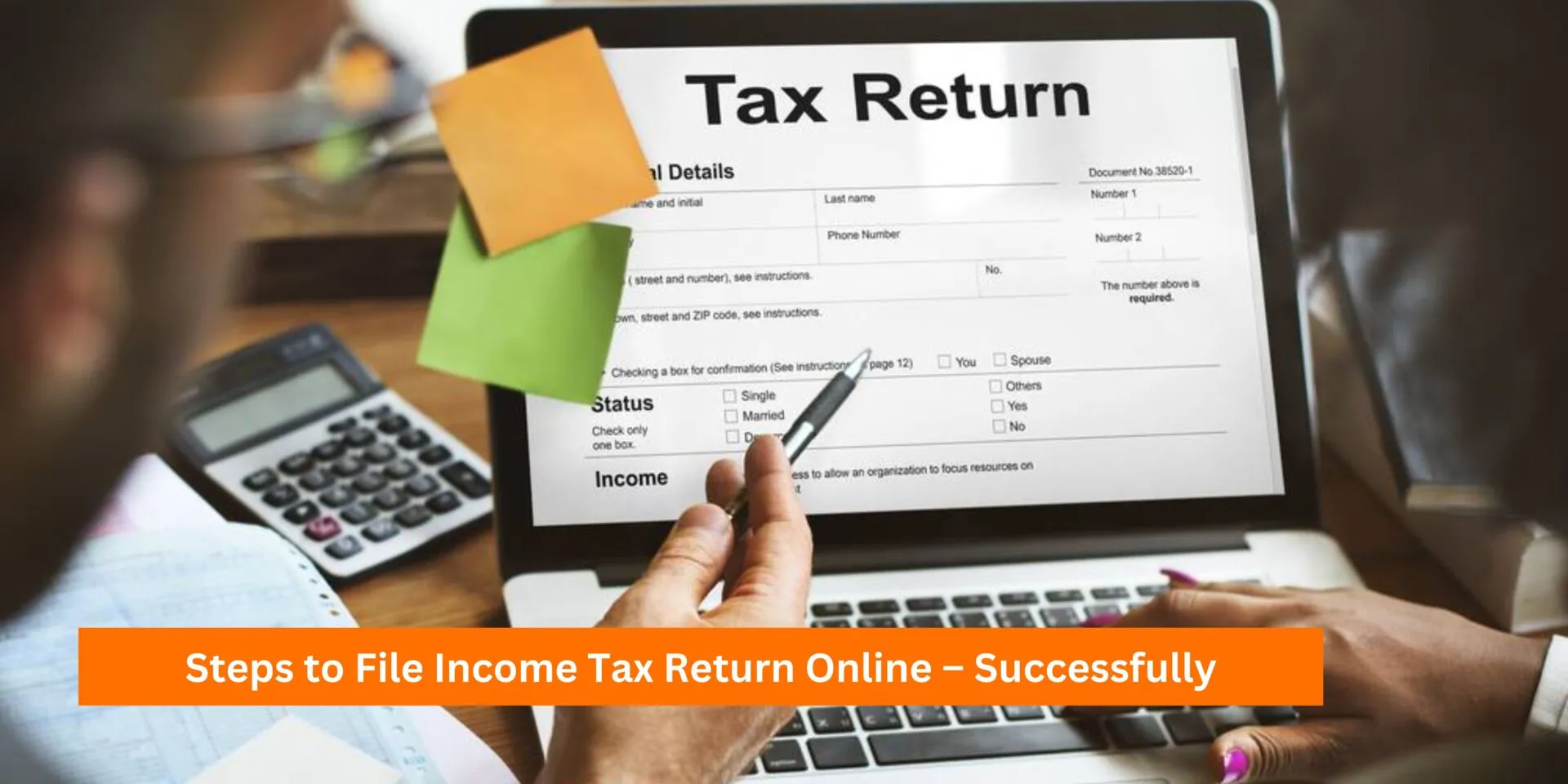
Income Tax Return E-Filing for FY 2024-25: How to File Online
Income Tax Return E-Filing for FY 2024-25: How to File Online
The Central Board of Direct Taxes (CBDT) has extended the deadline for filing Income Tax Returns (ITR) for the Financial Year (FY) 2024-25 (Assessment Year 2025-26) to September 15, 2025, from the original July 31 deadline, as announced on May 27, 2025. This extension, driven by significant updates to ITR forms and system enhancements, offers taxpayers additional time to ensure accurate and hassle-free filing. With the Income Tax Department’s e-filing portal, taxpayers can file their ITR online from the comfort of their homes, requiring only their PAN, Aadhaar, Form 16, investment declarations, and bank account details. This comprehensive guide provides step-by-step instructions for e-filing your ITR, downloading the ITR-V copy, and understanding key considerations to avoid penalties and ensure compliance. Whether you're a first-time filer or a seasoned taxpayer, this article simplifies the process for a seamless experience.

Why the ITR Filing Deadline Was Extended
The CBDT extended the ITR filing deadline to September 15, 2025, due to extensive revisions in the ITR forms for AY 2025-26, introduced via the Finance Act 2024. These updates aim to simplify compliance, enhance transparency, and ensure accurate reporting of income, deductions, and tax liabilities. Key changes include simplified ITR-1 and ITR-4 forms for salaried individuals and small business owners with long-term capital gains up to INR 1,25,000, revised capital gains schedules effective from July 23, 2024, and mandatory TDS section code reporting. Additionally, the late release of e-filing utilities and delayed TDS credit reflections in Form 26AS necessitated extra time for taxpayers to adapt to these changes.
This extension benefits over 13.35 crore registered taxpayers, particularly individuals, Hindu Undivided Families (HUFs), and non-audit partnership firms, by providing a 46-day buffer to file without penalties. Filing by the extended deadline also ensures eligibility for capital gains exemptions, deductions under Chapter VI-A, and loss carry-forward benefits, while avoiding interest under Section 234A and late filing fees under Section 234F.
Who Needs to File an ITR for FY 2024-25?
Filing an ITR is mandatory for individuals, HUFs, and other entities with a total income exceeding INR 2.5 lakh (under the old tax regime) or INR 3 lakh (under the new tax regime) before exemptions. Other criteria include owning foreign assets, earning income from foreign sources, or incurring expenditure above INR 2 lakh on foreign travel. Even if your income is below the taxable threshold, filing an ITR is advisable to claim refunds, carry forward losses, or maintain financial records for loan or visa applications.
The Finance Act 2024 has made the new tax regime the default for AY 2025-26, with lower tax rates but fewer deductions. Taxpayers opting for the old regime, which allows exemptions under Sections 80C, 80D, and others, must file by September 15, 2025, to exercise this choice. Late filers default to the new regime, potentially losing deduction benefits. As of September 7, 2025, over 4.89 crore ITRs have been filed, with 4.63 crore verified, indicating a slower filing pace compared to last year’s 7.28 crore filings by July 31, 2024.
Step-by-Step Guide to E-File ITR for FY 2024-25
Filing your ITR online is a straightforward process through the Income Tax Department’s e-filing portal. Follow these detailed steps to ensure a smooth and accurate submission:
- Log In to the E-Filing Portal: Visit the official Income Tax e-filing portal and log in using your PAN as the user ID and your registered password. Ensure your PAN is active and linked with your Aadhaar for seamless authentication.
- Navigate to File ITR: Click on “e-File” in the top menu, select “Income Tax Returns,” and then choose “File Income Tax Return.”
- Select Assessment Year and Mode: Choose Assessment Year 2025-26 and select “Online” as the filing mode for a guided process.
- Choose Filing Status: Indicate your status as Individual, HUF, or Others. Select the appropriate category based on your income sources and entity type.
- Select the Correct ITR Form: Pick the applicable ITR form (e.g., ITR-1 for salaried individuals with income up to INR 50 lakh, ITR-2 for those with capital gains). Refer to Form 16, AIS, and Form 26AS to ensure accuracy.
- Enter Income and Deduction Details: Fill in details of your income from salary, house property, capital gains, business, or other sources. Include deductions under Sections 80C, 80D, 80G, or 80TTA as applicable.
- Pay Taxes if Due: If tax is payable, use the “e-Pay Tax” service to settle the amount via net banking or UPI. Return to the filing section after payment.
- Preview and Submit: Review the summary of your ITR. If no tax is due or a refund is applicable, proceed to preview and submit directly.
- Validate Bank Details: Provide or confirm your bank account details for refund processing. Ensure the account is pre-validated to avoid delays.
- Verify Your Return: Complete e-verification within 30 days using Aadhaar OTP, Electronic Verification Code (EVC), or net banking. Non-verified returns are considered invalid, leading to cancellation.
The portal’s intuitive interface and pre-filled data (based on AIS and Form 26AS) simplify the process, but double-check all entries to avoid discrepancies that could trigger notices from the Income Tax Department.
How to Download Your ITR-V Copy
After successfully filing your ITR, downloading the ITR-V (Acknowledgement) is essential for record-keeping. Here’s how to do it:
- Log In to the Portal: Access the e-filing portal using your PAN and password.
- View Filed Returns: Navigate to “View Returns/Forms” under the “e-File” section and select “Income Tax Returns.”
- Select Assessment Year: Choose AY 2025-26 and click “Submit.”
- Download ITR-V: Locate the ITR-V Acknowledgement Number for your filed return and click to download the PDF.
Store the ITR-V PDF securely, as it serves as proof of filing. If you opted for physical verification, print and send the signed ITR-V to the Centralized Processing Centre (CPC) in Bengaluru within 30 days.
Choosing the Right ITR Form
Selecting the correct ITR form is critical to avoid errors. The CBDT has notified seven ITR forms for AY 2025-26, each tailored to specific taxpayer categories:
- ITR-1 (Sahaj): For individuals with income up to INR 50 lakh from salary, one house property, and other sources (e.g., interest, dividends).
- ITR-2: For individuals and HUFs with income from capital gains, multiple properties, or foreign assets, but no business income.
- ITR-3: For individuals and HUFs with income from business or profession, including partners in firms.
- ITR-4 (Sugam): For individuals, HUFs, and firms opting for presumptive taxation under Sections 44AD, 44ADA, or 44AE.
- ITR-5, ITR-6, ITR-7: For firms, companies, trusts, and other entities, typically requiring audit.
Using the wrong form can lead to defective return notices under Section 139(9). Cross-check your income sources with Form 16, AIS, and Form 26AS to select the appropriate form.
Penalties for Late Filing
Missing the September 15, 2025, deadline incurs penalties under the Income Tax Act. A late filing fee of INR 5,000 applies if your taxable income exceeds INR 5 lakh, or INR 1,000 if below INR 5 lakh, as per Section 234F. Additionally, interest at 1% per month on unpaid taxes is levied under Section 234A. Late filers may also lose the ability to carry forward losses or opt for the old tax regime.
Belated returns can be filed until December 31, 2025, under Section 139(4), but with penalties. Updated returns (ITR-U) are allowed until March 31, 2030, with additional tax liabilities. Filing on time avoids these costs and ensures faster refund processing, with some taxpayers reporting refunds within 4–12 hours of filing in 2025.
Tips for a Smooth E-Filing Experience
To ensure error-free ITR filing, consider these tips:
- Verify Pre-Filled Data: Cross-check AIS and Form 26AS data with your records to avoid discrepancies in income or TDS.
- Use Secure Networks: File using a secure Wi-Fi or mobile data connection to protect sensitive information.
- File Early: Avoid last-minute rushes to prevent portal glitches, as reported by professional bodies like the Bombay Chartered Accountants’ Society.
- Keep Documents Ready: Gather Form 16, investment proofs, and bank details beforehand to streamline the process.
- Monitor Refund Status: Check refund status via the e-filing portal to ensure timely credit to your validated bank account.
With over 3.35 crore ITRs processed as of September 7, 2025, the Income Tax Department’s efficient systems ensure quick turnaround for compliant filings. By following these steps and tips, taxpayers can navigate the e-filing process confidently and meet the extended deadline without stress.
Comment / Reply From
You May Also Like
Popular Posts
Newsletter
Subscribe to our mailing list to get the new updates!





